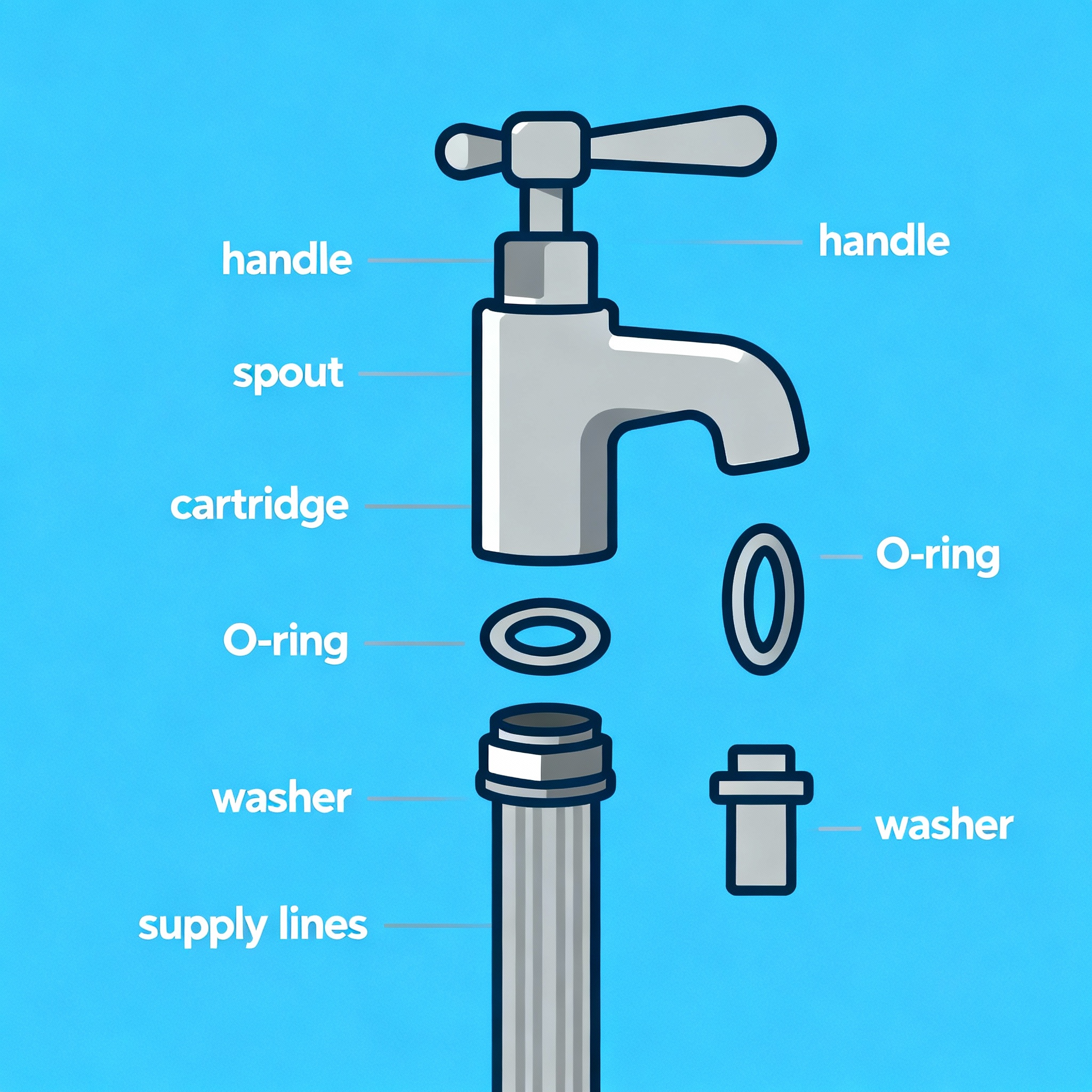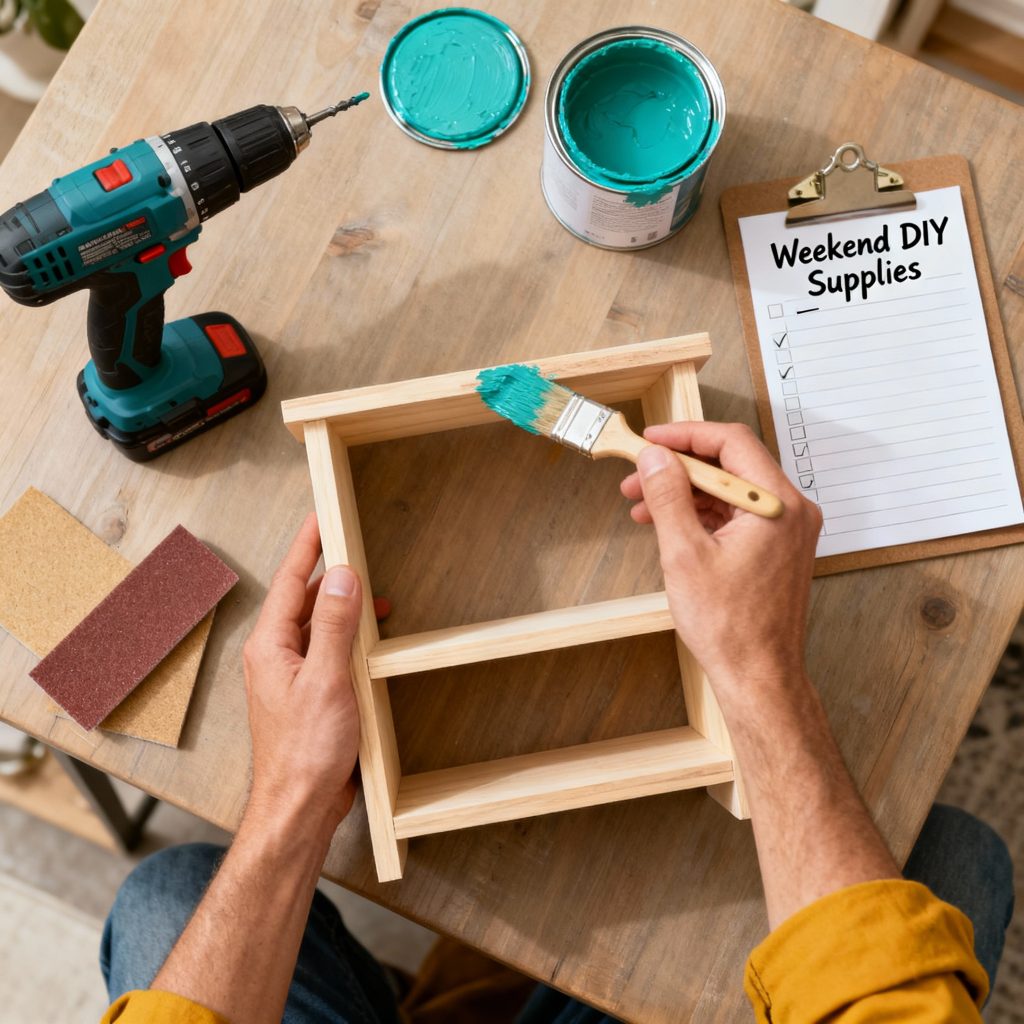Leaky faucets are one of those small household problems that quietly waste water and annoy you every time you hear a drip. With a few basic tools and a little patience, most leaks can be fixed in under an hour without calling a pro. In this guide you will learn simple, dependable steps that work for the most common faucet types, and how to decide when to call a plumber.
In the instructions below you will see clear steps, tool lists, and troubleshooting tips. I will also show common parts to check, and a few visual cues that make the repair straightforward. If you want a quick reference for more home improvement projects, check the Marvlus blog resources for related guides at https://marvlus.blog/guides/.
{keyword} is easier than you think, and by the end of this article you should feel ready to tackle a dripping sink in your kitchen or bathroom.
What causes a faucet to leak
Most leaks come from worn internal parts or loose connections. The three most common causes are:
- Worn washers and O-rings, common in compression faucets. These parts compress and fail over time.
- Damaged cartridges, common in cartridge and ceramic-disk faucets. A scratched cartridge or mineral buildup can let water bypass seals.
- Loose supply line connections or a failing valve under the sink, which can cause steady leaks rather than a drip.
Knowing which type of faucet you have is the first step. Single-handle faucets, two-handle faucets, and pull-out faucets all have slightly different internal parts, but the repair logic is similar: shut off the water, open the faucet to relieve pressure, disassemble carefully, replace the worn part, and reassemble.

Tools and parts you will need
- Adjustable wrench and a basin wrench for tight spaces
- Screwdrivers, both flat and Phillips
- Replacement washers, O-rings, or a replacement cartridge specific to your faucet model
- Plumber's grease and plumber's tape
- Towels or a small bucket to catch water
Tip, bring the old part to a hardware store to match it precisely if you are unsure. If you want quick parts and tool suggestions from a retailer, visit a local store or the Home Depot faucet repair guide for model-specific advice, or see general step photos at Family Handyman.
Step-by-step: Fix a leaky faucet easily
1. Turn off the water and plug the drain
Locate the shutoff valves under the sink and turn them clockwise until snug. If there are no shutoffs, turn off the main water supply. Open the faucet to drain remaining water. Plug the drain with a sink stopper or a towel so small parts do not fall down the drain.
2. Identify the faucet type and remove the handle
Remove any decorative caps, then unscrew the handle screw. Pull the handle off gently. Single-handle faucets often hide the screw at the back or under a cap. Two-handle compression faucets will have separate handles on hot and cold.
3. Inspect and remove the damaged part
For compression faucets, remove the nut and extract the stem to access the washer at the base. For cartridge or ceramic-disk faucets, remove the retaining clip or nut and pull the cartridge straight out. Inspect for cracked washers, tired O-rings, or mineral buildup.
4. Replace the worn parts
Install a new washer, O-ring, or cartridge that matches the old part. Use plumber's grease on O-rings for a better seal and smoother operation. Do not over-tighten parts, but make sure connections are snug.
5. Reassemble and test
Put the faucet back together in reverse order. Remove the drain plug, slowly open the water shutoffs, and test the faucet. Check for leaks around the handle and the supply lines. If the drip is gone, you are done.
6. Troubleshooting if the leak persists
- If you still hear a drip from the spout, the cartridge or seat may need replacing.
- If water leaks under the sink, tighten the supply line connections and check the compression fitting.
- Stubborn mineral deposits can prevent a seal, soak parts in vinegar to dissolve buildup and replace seals.

{keyword}: When to DIY and when to call a pro
Most drips are DIY-friendly, but call a professional if:
- The leak is coming from the water supply lines or the shutoff valve under the sink and tightening does not help, because pipe replacement may be required.
- The faucet base is cracked or corroded.
- You do not have a shutoff valve and must shut off the house water to test, and you are not comfortable doing that.
If you prefer guided help before you begin, see basic plumbing safety and detailed tutorials on This Old House.
Preventive tips to avoid future leaks
- Avoid over-tightening handles, which wears seals faster.
- Clean aerators regularly to prevent mineral buildup that masks leaks.
- Consider replacing older faucets with newer cartridge or ceramic-disk models for longer life and fewer leaks.
For more home improvement ideas that pair well with faucet repair, browse related posts at https://marvlus.blog/blog/ and check the tools page at https://marvlus.blog/tools/ for suggested repair toolkits.
Frequently Asked Questions
How much does it cost to fix a leaky faucet yourself
A simple DIY repair usually costs $5 to $25 for washers, O-rings, or a basic cartridge. If you need a high-end cartridge or professional help, costs will be higher.
How long will it take to fix a dripping faucet
For most homeowners, 20 to 60 minutes is enough. Complex installs or corroded parts may take longer.
Can a leaky faucet cause damage to my home
Yes, persistent leaks can stain sinks, damage cabinetry, and increase water bills. Fixing drips quickly prevents these problems.
What if I cannot find replacement parts for my faucet
Bring the old part to a hardware store for cross-referencing, or search by the faucet brand and model online. If the model is very old, consider replacing the entire faucet.
Is it safe to use plumber's tape on internal faucet parts
Plumber's tape is for threaded pipe joints, not internal cartridge seals. Use plumber's grease on O-rings and replace worn rubber seals rather than relying on tape.
Will replacing a faucet save water
Yes, fixing leaks reduces waste. A single steady drip can waste dozens of gallons over a month, so repair pays back quickly through water savings.
Quick checklist before you start
- Shut off water supply
- Gather tools and replacement parts
- Protect the sink and catch small parts
- Work methodically and keep parts in order
Ready to fix that drip?
Here's the thing, a leaky faucet is annoying but it is often an easy win for homeowners who like solving problems themselves. Follow the steps above and you will likely stop the drip in under an hour. If you want more step-by-step home improvement articles and weekly content ideas, visit Marvlus for fresh, optimized posts at https://marvlus.blog/resources/.
Conclusion
Fixing a leaky faucet is a practical skill that saves water, money, and hassle. Start by identifying your faucet type, shut off the water, and replace the worn washer, O-ring, or cartridge. If the leak is stubborn or related to supply lines, call a plumber. With basic tools, a tidy workspace, and the steps above you can handle most faucet repairs confidently.
If you need more help, check the step photos and extended tutorials linked in this article, and remember to keep replacement parts labeled for your next repair. Good luck, and enjoy a drip-free sink.




